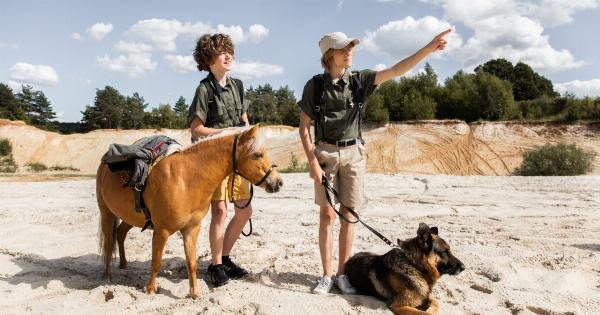Adolescence can be a difficult time for both humans and dogs. Just as teenagers can test boundaries and push limits, adolescent dogs can exhibit behavior issues that can be frustrating and challenging for owners to deal with.
However, with the right training, socialization, and patience, you can survive your dog’s adolescence and develop a happy and well-behaved companion.
Understanding Adolescence in Dogs
Like humans, dogs go through hormonal changes during adolescence. Typically, this phase starts between six months to two years of age and can last up to 18 months.
During this time, your once well-behaved and obedient puppy may begin to exhibit new behaviors such as chewing, digging, jumping, and barking excessively. Your dog may also become more aggressive towards other dogs and people.
These changes are perfectly normal and simply indicate that your dog is going through a phase that requires firm but gentle guidance and training.
With patience, consistency, and positive reinforcement, you can help your dog to develop good habits and overcome any behavioral challenges.
Training and Obedience
Training is critical during your dog’s adolescence.
You should start by reinforcing basic commands such as “sit,” “stay,” “come,” and “heel.” It is important to be consistent in your training and to use positive reinforcement techniques, such as offering treats and praise when your dog performs a desired behavior. Avoid any negative reinforcement or punishment, as this can lead to fear or aggression in your dog.
If your dog is exhibiting specific behavior problems such as digging or chewing, you may need to address those issues specifically.
For example, if your dog is digging holes in your yard, you may need to provide additional stimulation or exercise to alleviate boredom. You may also try offering an alternative digging spot, such as a sandbox or designated area in your yard.
If you are having difficulty training your dog during adolescence, you may want to consider enrolling them in a formal obedience class.
These classes are great for socialization and can help your dog learn basic commands from a professional trainer in a structured environment.
Socialization
Socialization is critical during your dog’s adolescence. This is the time when your dog is developing their social skills and learning to interact with other dogs and people.
You should expose your dog to a variety of situations and environments, including different types of people and other dogs. This will help them to develop confidence and become a well-adjusted social companion.
It is important to supervise your dog during socialization and to reinforce positive behavior.
If you notice your dog exhibiting aggressive behavior, such as growling or biting, remove them from the situation and avoid similar situations until you can address the behavior with additional training.
Behavior Modification
If your dog is exhibiting severe behavior problems, such as aggression towards other dogs or people, you may need to consider seeking professional help from a behaviorist.
A behaviorist can help you identify the root cause of the behavior and develop a plan to modify it. This may involve additional training, medication, or changes to your dog’s environment.
It is important to recognize that behavior modification takes time and patience. You should never use punishment or negative reinforcement to address behavior problems, as this can exacerbate the problem and lead to fear or aggression in your dog.
Conclusion
Your dog’s adolescence can be a challenging time, but with patience, consistency, and positive reinforcement, you can help your dog develop into a happy and well-behaved companion.
By focusing on training, socialization, and behavior modification when necessary, you can survive the dog days of adolescence and enjoy your furry friend for many years to come.





























